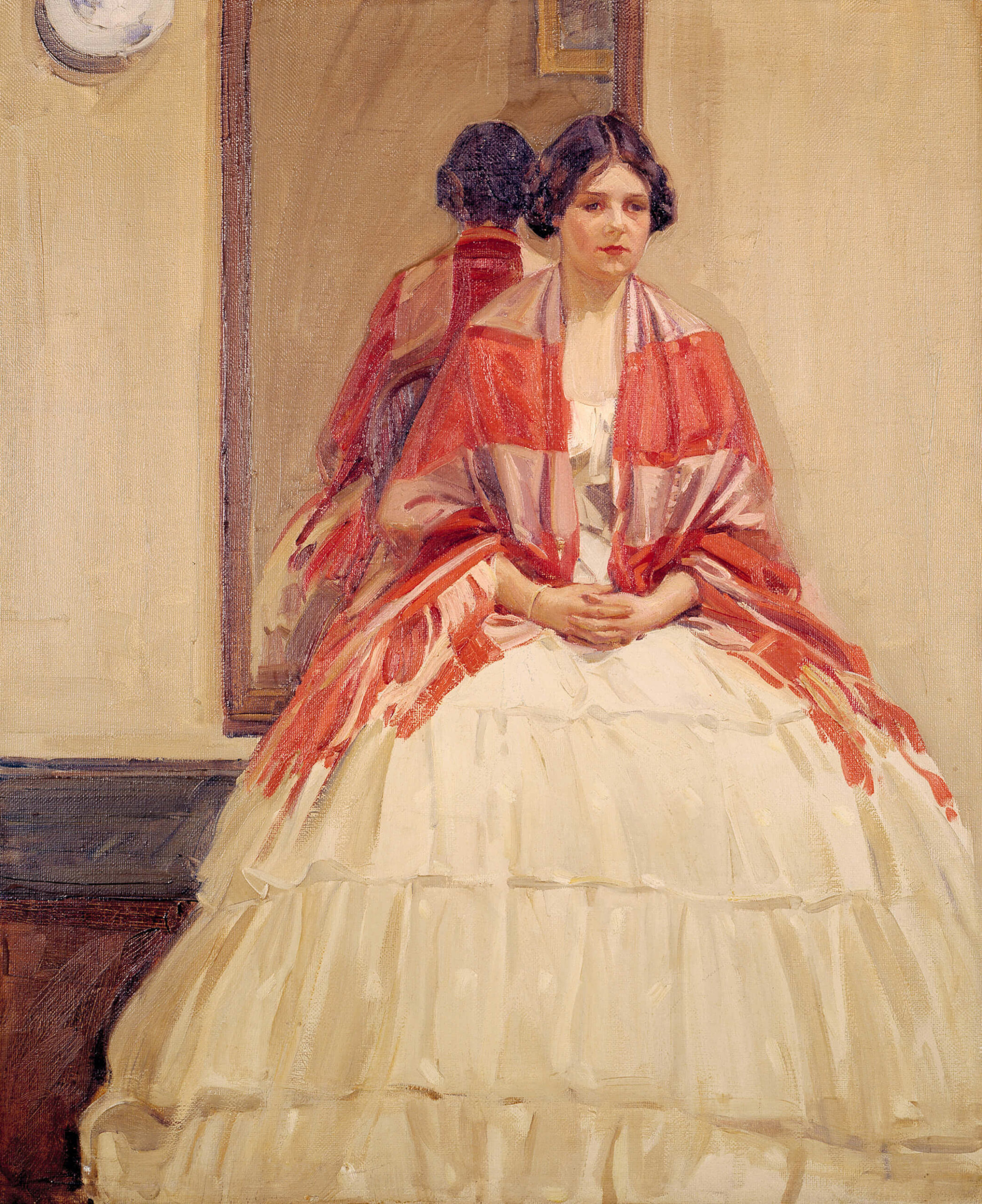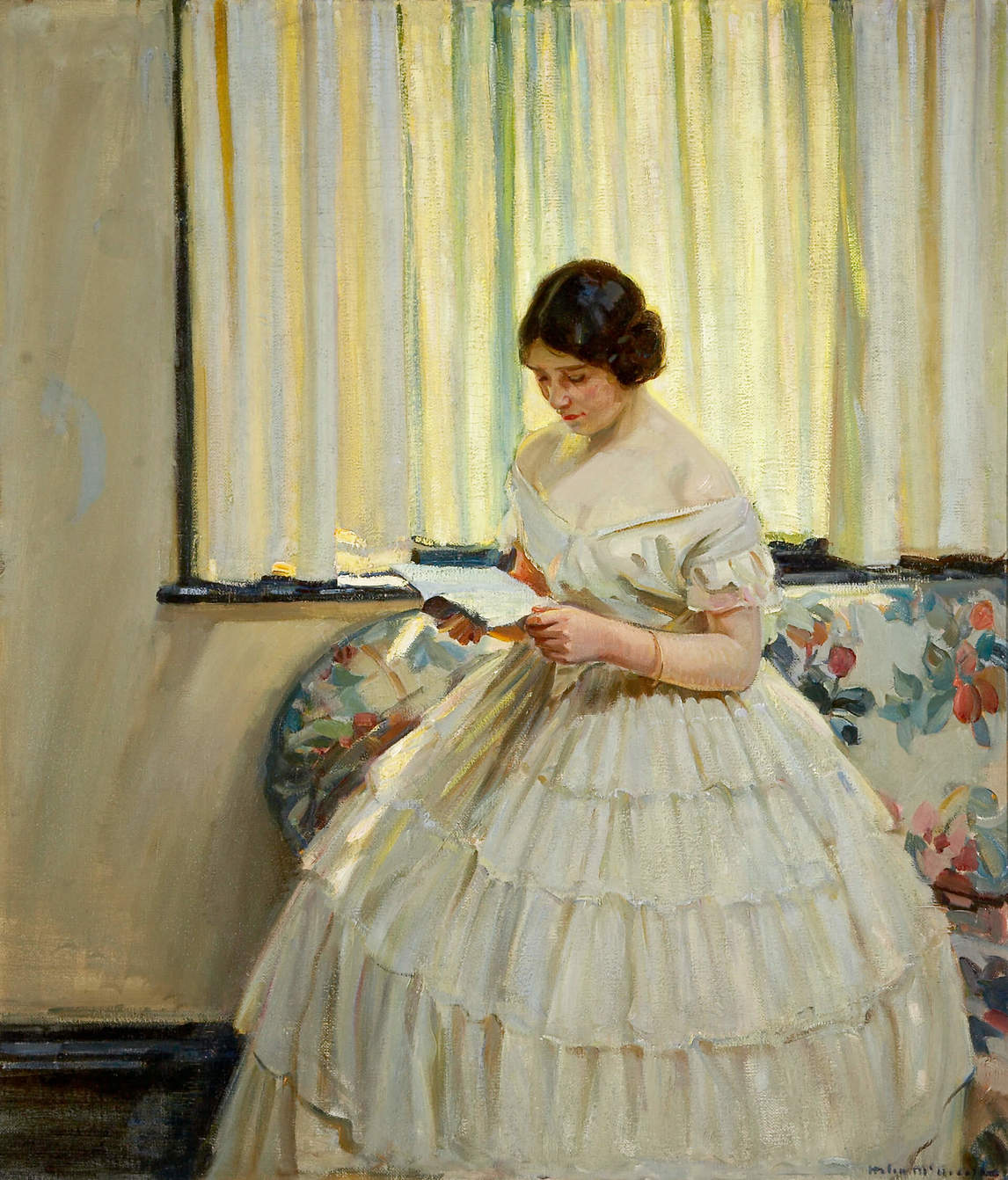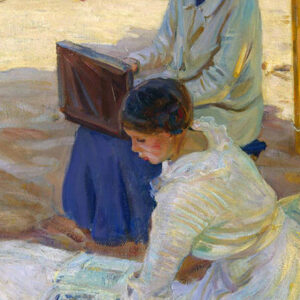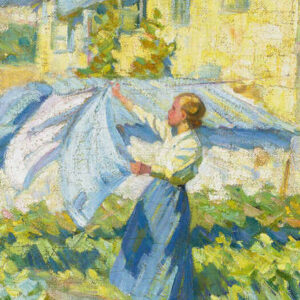The Victorian Dress 1914

Helen McNicoll, The Victorian Dress, 1914
Oil on canvas, 108.8 x 94.5 cm
McCord Museum, Montreal
The Victorian Dress is one of two paintings with the same subject and title that McNicoll produced at the height of her career. Both images are set in the London studio she shared with Dorothea Sharp (1874–1955) where she also painted The Chintz Sofa, c. 1913. Although the dress images are different in composition and colouring, they both reveal an interest in the performance of white, middle-class femininity through fashion.

The painting shows a single female figure standing against the studio wall; a hanging mirror reflects the model’s back but little else. The woman wears a colourful salmon-pink-and-mauve striped shawl, draped over a white dress with a full skirt of tiered ruffles. This set of paintings was made on the eve of the First World War, yet the silhouette here was en vogue around the mid-nineteenth century, as were the sloped shoulders and tiny waist of the dress seen in the second image.
Skirts of this shape became popular following the invention of the cage crinoline in the 1850s, which, being light and flexible, allowed women to be both fashionable and physically mobile. Caricaturists in London and Paris loved to mock the frivolity of women in crinolines, picturing them stuck in doorways or falling off omnibuses. Many of these caricatures reveal contemporary anxieties about the physical occupation of public space by women newly enabled by the crinoline.
The shawl, likely cashmere, is as old-fashioned as the dress. The cashmere shawl was made in Kashmir from the fifteenth century on, and when the East India Company began to import them in the eighteenth century, they became fashionable accessories in England and France. Popularized by the Empress Josephine in France, they were frequently used in a ritual exchange of goods before marriage. In the first half of the nineteenth century, before cheap, factory-made imitations transformed the market, the cashmere shawl was a signifier of wealth and status, a luxury object displayed on the female body.
The Victorian Dress is an ambiguous comment on the ensemble and the woman who wears it. McNicoll clad her many other representations of female figures in modern dress. Perhaps this painting is a deliberate critique of the heavy expectations associated with the sartorial expression of femininity, especially given the mirror, with its historical connotations of vanity, in the background. McNicoll may be suggesting that femininity is a performance, an identity you “put on,” just like a costume.

 About the Author
About the Author
 More Online Art Books
More Online Art Books
 Acknowledgements
Acknowledgements